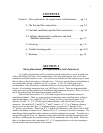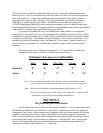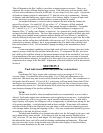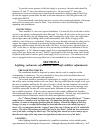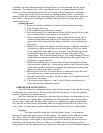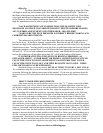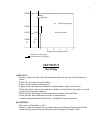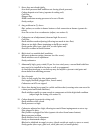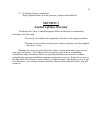
This will depend on the flue’s ability to provide a consistent negative pressure. There is no
substitute for a warm, efficient chimney/pipe system. If the flue gases cool too quickly, draft
will slow and combustion will not be as efficient. Do not skimp on the flue system. A good rule
of thumb on chimney height is a minimum of 12’ from the stove top to termination. Location
of chimney and other factors may require more or less chimney height. In areas of high winds
or draft inversions, a suitable wind-directional or vacuum cap may be needed.
An insulated chimney is a must in order to maintain the heat inside the chimney for
proper flow of gases. For model OC-10, use a class “A”, 6” diameter, all-fuel insulated
chimney that has been tested to U.L. HT103 when passing through combustibles. For models
OC-7 and OC-8, a 4”, 5”, or 6” diameter Class “A” insulated chimney or an approved 4”
diameter Class “L” (pellet vent) chimney is approved. As a general rule, smaller diameter flues
are better for draft and efficiency. The stove pipe connector may be single-wall black pipe with
tight fitting joints (mobile home connectors must be double-wall, see Section 1), and must be
securely fastened at all joints with 3 sheet metal screws. Fasten connector pipe to the flue collar
on the stove and the ceiling box/wall thimble with screws as well. The Oil Classic may also be
connected to a masonry chimney, but it is recommended that it be lined with a stainless steel
liner and insulated as well. Use and install all piping according to the manufacturers listed
clearances.
Certain atmospheric conditions such as high winds will cause a change (increase) in the
negative pressure inside the flue and thus inside the stove. To compensate for this, your stove
has a draft or flue stabilizer which is a barometric damper located at the rear back of your stove.
Upon installation of the stove and after lighting and warm-up, the rear cover must be removed
and the draft stabilizer adjusted. Its purpose is to allow more or less air to travel into the flue to
compensate for a change in the flue draft. Adjustment of the draft stabilizer will be discussed in
Section 4.
SECTION 3
Fuel tank installation and fuel line connections
OIL:
Your Kuma Oil Classic comes with a carburetor set for an average of a 2.35 cc.
viscosity rating. You should be able to burn either #1 or #2 fuel with adjustments to the
carburetor. Bio-diesel may also be successfully burned in the Oil Classic. Due consideration to
fuel grades should be noted. #1 Fuel oil, K-1, or kerosene will burn much cleaner than #2 fuel
and requires less maintenance. #2 fuel or diesel grades of fuel are fine to burn, however there
are combustibles present in # 2 fuel that become solids when they are burned, thereby requiring
more frequent cleaning of the decoker and burner.
TANK:
The fuel tank should be clean (second-hand tanks not recommended), so a new tank is
advised. Steel tanks require more maintenance such as painting to prevent rust. A polyethylene
tank is preferred as it will never rot or rust, and is basically maintenance-free. A tank with a
larger capacity will require less fillings as well as an opportunity to obtain better pricing for fuel
oil in greater quantities. Avoid placing the tank in direct sunlight. Warm tanks will condense
moisture which will fall to the bottom of your tank where it will need to be drained to prevent
valve damage and/or freezing and stopping oil flow. Also, due consideration should be given to
accessibility to the tank for delivery trucks.
The ideal tank should have two bottom-end outlets: one for fuel supply to the stove, and
one to drain off any water and dirt. To be able to do this, the tank must be installed with a
“fall” of at least 1/4” per foot of tank length. The fuel supply will come from the high end of
the tank and the lower end will be used for draining condensation and impurities. If the tank
has only one outlet, be sure to tip the tank away from the outlet slightly, as described above.
Brick or cement foundation for the tank is advised.
3




